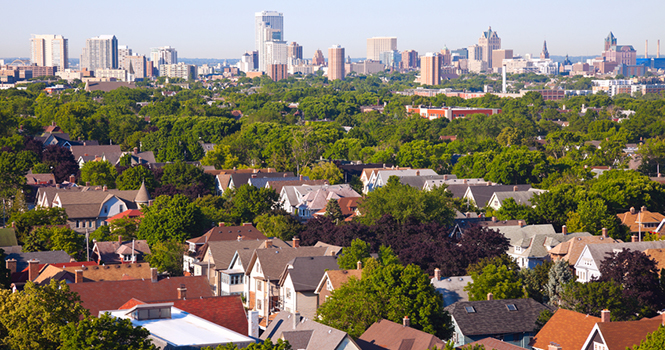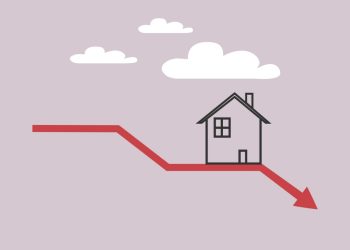The recently released ATTOM Data Solutions 2016 U.S. Natural Hazard Housing Risk Index found that home sales in the first six months of 2016 increased 4.2 percent from the same time period a year ago in the bottom fifth of U.S. counties with the lowest level of natural hazard risk — more than twice the 1.9 percent increase in the top fifth of U.S. counties with the highest level of natural hazard risk.
More than 3,000 U.S. counties were indexed based on risk of six natural hazards: earthquakes, floods, hail, hurricane storm surge, tornadoes and wildfires using data collected by ATTOM’s neighborhood research portal www.homefacts.com. ATTOM also analyzed home sales and price trends in more than 800 counties with at least 100 single family home sales in the first six months of 2016. Those 800 counties — which combined have more than 70 million single family homes and condos — were divided into five equal groups (quintiles) based on the natural hazard risk index and assigned to one of five risk categories: Very High, High, Moderate, Low, and Very Low.
“While price and affordability along with access to jobs are the primary drivers in local markets with strong increases in home sales activity in 2016, it’s evident from this data that natural hazard risk does make a difference to homebuyers and investors who are active in this housing market,” says Daren Blomquist, senior vice president at ATTOM Data Solutions. “Even among the subset of counties where the median price is below the national median as well as among the subset of counties where home prices are still affordable for average wage earners, there is a consistent trend of stronger increases in home sales volume compared to a year ago in the lowest-risk markets for natural hazards compared to the highest-risk markets.”
Counties with highest natural hazard risk
Among the 804 counties analyzed for home sales and price trends, those with a Natural Hazard Housing Risk Index in the Top 5 highest were Oklahoma County, Okla.; Monroe County, Fla. (Key West); Cleveland County, Okla. (Oklahoma City); Nevada County, Calif. (Truckee); and Lake County, Calif. (Clearlake).
Among 78 larger counties with at least 5,000 home sales in the first six months of 2016, those with the highest risk index were Oklahoma County, Okla.; Riverside County, Calif. (Inland Empire of Southern California); Collier County, Fla. (Naples); Miami-Dade County, Fla.; and Santa Clara County, Calif. (San Jose).
Counties with lowest natural hazard risk
Among the 804 counties analyzed for home sales and price trends, those with a Natural Hazard Housing Risk Index in the Top 5 lowest were Milwaukee County, Wisc.; Kewaunee County, Wisc. (Green Bay); Racine County, Wisc. (Racine); Knox County, Maine; and Kenosha County, Wisc. (Chicago metro area).
Among larger counties with at least 5,000 home sales in the first six months of 2016, those with the lowest risk index were Cuyahoga County, Ohio (Cleveland); Lake County, Ill. (Chicago area); Kent County, Mich. (Grand Rapids); Maricopa County, Ariz. (Phoenix); and Montgomery County, Penn. (Philadelphia metro area).
Home values and home prices lower in lowest-risk counties
In the 161 counties in the top quintile for natural hazard risk (Very High Risk), there were a total of 21 million single family homes and condos representing 30 percent of all homes and condos in the 804 counties analyzed. In the 161 counties in the bottom quintile for natural hazard risk (Very Low Risk) there were a total of 10 million single family homes and condos representing 15 percent of all homes in the 804 counties analyzed.
The average estimated market value for homes in the lowest-risk counties was $187,291 — 33 percent below the average estimated market value for homes in the highest-risk counties: $279,570.
The median sales price of single family homes and condos sold between January and June 2016 in the lowest-risk counties was $156,245 on average, 39 percent below the median sales price in the highest-risk counties during the same time period: $255,160.
Price appreciation stronger in highest-risk counties over past five years
Median home prices in the first six months of 2016 have increased an average of 6.5 percent compared to a year ago in the highest-risk counties compared to a 3.2 percent average increase in the lowest-risk markets during the same time period.
Median home prices in the first six months of 2016 are up 42.4 percent compared to the first six months of 2011 (near the bottom of home prices) in the highest-risk counties, while prices are up 23.8 percent during the same time period in the lowest-risk counties
10-year price appreciation, homeowner profits stronger in lowest-risk counties
Median home prices in the first six months of 2016 are up 9.5 percent from the same time period 10 years ago in the lowest-risk counties compared to a 1.9 percent increase compared to 10 years ago in the highest-risk counties.
Furthermore, homeowners in the lowest-risk counties have gained an average of 27.8 percent in home value since purchase while homeowners in the highest-risk counties have gained an average of 20.7 percent since purchase.
Home sales and price trends by type of natural hazard risk
Over the past five years, increases in home sales volume has fallen below the overall national average in counties with the highest risk of earthquakes, hurricane storm surge, wildfires and floods while counties with the lowest risk for those natural hazards have seen home sales volume increase at a faster pace than the national average over the past five years.
Conversely, home sales activity over the past five years has been stronger than the national average in markets with the highest risk of tornadoes and hail while markets with the lowest risk for those natural hazards have seen below-average increases in home sales activity.
View the full report here.











